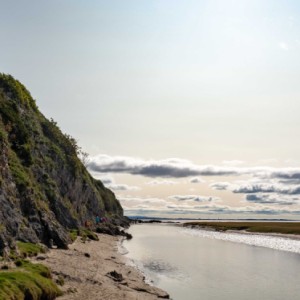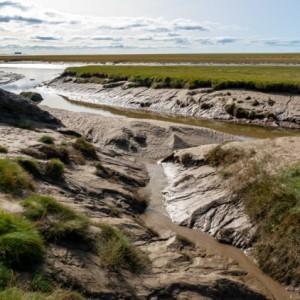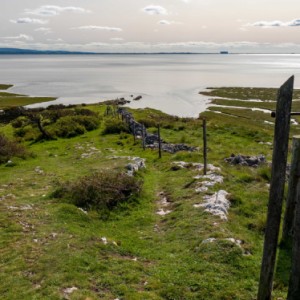Humphrey Head
I've noticed that holy wells are a series on Blip with the tag IHWyear so went out today to find the holy well on Humphrey Head because I've walked on the beach there a few times and had somehow missed it. We approached the area down Holy Well Lane- that's a good start! We walked up and down, got the OS map out on our phones and finally realised that this little dribble is the said well. It's definitely seen better days and even the sign saying the water is not suitable for drinking has got lost in the undergrowth. I'm copying from a leaflet on Cumbrian Holy Wells, the information on this well at the very foot of the entry details, just incase you are interested!. And as the well is such a let down I'm adding some more photos of Humphrey Head to show the trip was not a complete waste of time.
Covid 19 update. Week 8 of face coverings and week 1 of the new rule of 6 (in England). Is the rule of 6 enough? Large swathes of the North West are subject to much stricter rules that so far Cumbria has escaped, which means my Tuesday walk can continue for now. BUT we wait with anticipation to see if the Govt will introduce even stricter national rules this week. Many rumours are circulating, large fines for breaking quarantine have been introduced with money payments for those on low incomes who are supposed to be quarantining but cant work from home.
Holy Well details from the leaflet produced by !Living Magically!
Description: Stone structure set in a cleft in the cliff of Humphrey Head — a womb-like green setting, enclosed by hawthorn. Water spurts constantly from a small spout in the stonework. A warning sign above the spout reads ‘Danger — do not drink’, and the area is rather unkempt. The water tastes slightly salty. The aquifer is the source of the famous holy well of Cartmel Priory, renowned for its healing powers from the 1700s. The water is now bottled locally in Flookburgh as Willow Water, and is known to contain salicin — produced by rainwater washing through strata of white willow bark, built up over centuries. Salicin is used in making aspirin. Locals used to flock to the farmer’s field to drink from the spring after reports spread of its healing qualities. One Shetland pony in the field lived to the ripe old age of 47!




Comments
Sign in or get an account to comment.


